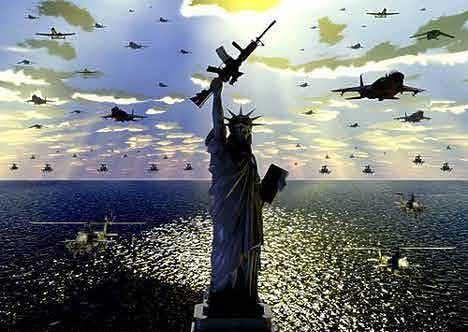Herat is today a quiet place. Quiet as it may be a city of Afghanistan. In effect, that is, war is elsewhere, in the villages and the mountains on the borders of the country: places such as the territory north of Shindand where the last day of February has fallen in the alpine attack Massimo Ranzani.
Of course, in Herat at any time there may be a bomb that explodes at the passing of a column of military vehicles, or a suicide bomber who blows himself up among a crowd of a market. But for the half million inhabitants of the city and province, ordinary life goes on insecurity and poverty, as well as intellectual material, a country at war for ten years.
It is for those men and women that the Italian troops are there in "peace mission". And that is their life and Vidia Asthma, Summary, Mahnaz and many other young Afghan women are learning to tell in pictures and videos with the first course for photos and videoreporter women held at the University of Herat by the Catholic University of Milan in collaboration with the Italian contingent stationed in Afghanistan and the Foundation Fondiaria Sai.
Asthma and other out every day in the field to resume what escapes or is not interested in war photographer: the day in the life of an elderly woman: cleaning, cooking, shopping and looking after his granddaughter (his mother died during the war) while men of the family are out to make ends meet.
Or the work, all female, cultivation, harvesting and drying the saffron. Or, again, the dream can Nahid, 23, karate teacher and coach of a women's team. Part of the work of aspiring young photographers was presented Feb. 25 in a major exhibition in Herat, where pictures and texts are not talking about bombs, but the work and the market, toxic and family.
In a word, the hard life of a people trying to invent a semblance of normality. Some of the pictures are also on site womentobe. org, the online magazine where they published the work of photojournalists. "So far, information from Afghanistan has been the monopoly of the international press, which obviously favors the coverage of the war.
The goal we set is rather to make the recount Afghanistan by Afghans, "said Marco Lombardi, coordinator of the course. "With the added value of specific training of women journalists: they are, in fact, that with sensitivity, curiosity and courage can tell a country in a slow but inevitable transformation." For the best is provided for an internship in some Italian media.
"The girls are very motivated and determined," says Lombardi, who teaches Sociology at the Catholic and crisis management and risk communication. "From the first moment they have not hesitated to plunge the territory to collect stories and characters, with no helmet or body armor penalty for all journalists and foreign operators, including myself." The photographer is not going to be the only authentic expression of the concept "peace mission" in Afghanistan.
Since two years ago, the director of the Ministry of Culture Attaullah Wahidyar was in Italy, in Milan, seeking ideas and availability to local universities for courses to be held in Herat helping younger generations to build a new country, started several projects with a common basis: the Catholic University and sponsors provide the software, the Italian military hardware, namely buildings, built or rebuilt on site by our quota.
"All the projects have in common two guidelines: education and women," says Lombardi. The first started in Kabul in a school 40 kilometers from the Afghan capital has started a system of scholarships for 50 families them to send their daughters to school, more than a refresher course for teachers.
The scholarships are guaranteed until 2014, the year of the alleged withdrawal from Afghanistan. The Catholic then launched to coincide with that of photo and video report, a course at the University of Herat women and family as engines of development of the new Afghanistan. And, always Catholic, provides for the training of 30 teachers, 15 schools built in Herat province and by the Italian military.
"We teach the teachers, who finished high school kids go from desk to desk, how do we teach," says Lombardi. "Basic things: how do you class, with what tools, how to use them, how to manage conflict in the classroom. Knowledge which in turn will transfer the teachers to their colleagues.
" The real challenge, however, is the center for battered women who sought to organize the local government in the respective center built, again by the Italians in Herat and assigned to Dowa (Department of Women affaires). "We are still in the evaluation phase of the project," says Lombardi.
"The local government must explain in what context, for whom and to do what this Centre will be established." What does it mean, in Afghanistan, violence against women? Probably not what you meant in the West. More likely something that has to do with the role of women in Afghan society: a person without rights, often beaten, abused, divorced from her husband and then put on the road.
If not burned alive by her husband. Or suicide, always setting themselves on fire to escape a forced marriage or violence of a husband master. "There is a hospital in Herat Burn Center where medical care is given to women escaped the flames. We want to be sure to offer something more: not only psychological but also a new lease on life, "says Lombardi.
"It's very important that local institutions have identified this need, but before starting the project we must be sure that the government will be able, after our intervention, to give these women safe houses and work. Otherwise, our help would be futile and might as well give them the alcohol and strychnine instead of match.
" 


Of course, in Herat at any time there may be a bomb that explodes at the passing of a column of military vehicles, or a suicide bomber who blows himself up among a crowd of a market. But for the half million inhabitants of the city and province, ordinary life goes on insecurity and poverty, as well as intellectual material, a country at war for ten years.
It is for those men and women that the Italian troops are there in "peace mission". And that is their life and Vidia Asthma, Summary, Mahnaz and many other young Afghan women are learning to tell in pictures and videos with the first course for photos and videoreporter women held at the University of Herat by the Catholic University of Milan in collaboration with the Italian contingent stationed in Afghanistan and the Foundation Fondiaria Sai.
Asthma and other out every day in the field to resume what escapes or is not interested in war photographer: the day in the life of an elderly woman: cleaning, cooking, shopping and looking after his granddaughter (his mother died during the war) while men of the family are out to make ends meet.
Or the work, all female, cultivation, harvesting and drying the saffron. Or, again, the dream can Nahid, 23, karate teacher and coach of a women's team. Part of the work of aspiring young photographers was presented Feb. 25 in a major exhibition in Herat, where pictures and texts are not talking about bombs, but the work and the market, toxic and family.
In a word, the hard life of a people trying to invent a semblance of normality. Some of the pictures are also on site womentobe. org, the online magazine where they published the work of photojournalists. "So far, information from Afghanistan has been the monopoly of the international press, which obviously favors the coverage of the war.
The goal we set is rather to make the recount Afghanistan by Afghans, "said Marco Lombardi, coordinator of the course. "With the added value of specific training of women journalists: they are, in fact, that with sensitivity, curiosity and courage can tell a country in a slow but inevitable transformation." For the best is provided for an internship in some Italian media.
"The girls are very motivated and determined," says Lombardi, who teaches Sociology at the Catholic and crisis management and risk communication. "From the first moment they have not hesitated to plunge the territory to collect stories and characters, with no helmet or body armor penalty for all journalists and foreign operators, including myself." The photographer is not going to be the only authentic expression of the concept "peace mission" in Afghanistan.
Since two years ago, the director of the Ministry of Culture Attaullah Wahidyar was in Italy, in Milan, seeking ideas and availability to local universities for courses to be held in Herat helping younger generations to build a new country, started several projects with a common basis: the Catholic University and sponsors provide the software, the Italian military hardware, namely buildings, built or rebuilt on site by our quota.
"All the projects have in common two guidelines: education and women," says Lombardi. The first started in Kabul in a school 40 kilometers from the Afghan capital has started a system of scholarships for 50 families them to send their daughters to school, more than a refresher course for teachers.
The scholarships are guaranteed until 2014, the year of the alleged withdrawal from Afghanistan. The Catholic then launched to coincide with that of photo and video report, a course at the University of Herat women and family as engines of development of the new Afghanistan. And, always Catholic, provides for the training of 30 teachers, 15 schools built in Herat province and by the Italian military.
"We teach the teachers, who finished high school kids go from desk to desk, how do we teach," says Lombardi. "Basic things: how do you class, with what tools, how to use them, how to manage conflict in the classroom. Knowledge which in turn will transfer the teachers to their colleagues.
" The real challenge, however, is the center for battered women who sought to organize the local government in the respective center built, again by the Italians in Herat and assigned to Dowa (Department of Women affaires). "We are still in the evaluation phase of the project," says Lombardi.
"The local government must explain in what context, for whom and to do what this Centre will be established." What does it mean, in Afghanistan, violence against women? Probably not what you meant in the West. More likely something that has to do with the role of women in Afghan society: a person without rights, often beaten, abused, divorced from her husband and then put on the road.
If not burned alive by her husband. Or suicide, always setting themselves on fire to escape a forced marriage or violence of a husband master. "There is a hospital in Herat Burn Center where medical care is given to women escaped the flames. We want to be sure to offer something more: not only psychological but also a new lease on life, "says Lombardi.
"It's very important that local institutions have identified this need, but before starting the project we must be sure that the government will be able, after our intervention, to give these women safe houses and work. Otherwise, our help would be futile and might as well give them the alcohol and strychnine instead of match.
"



No comments:
Post a Comment